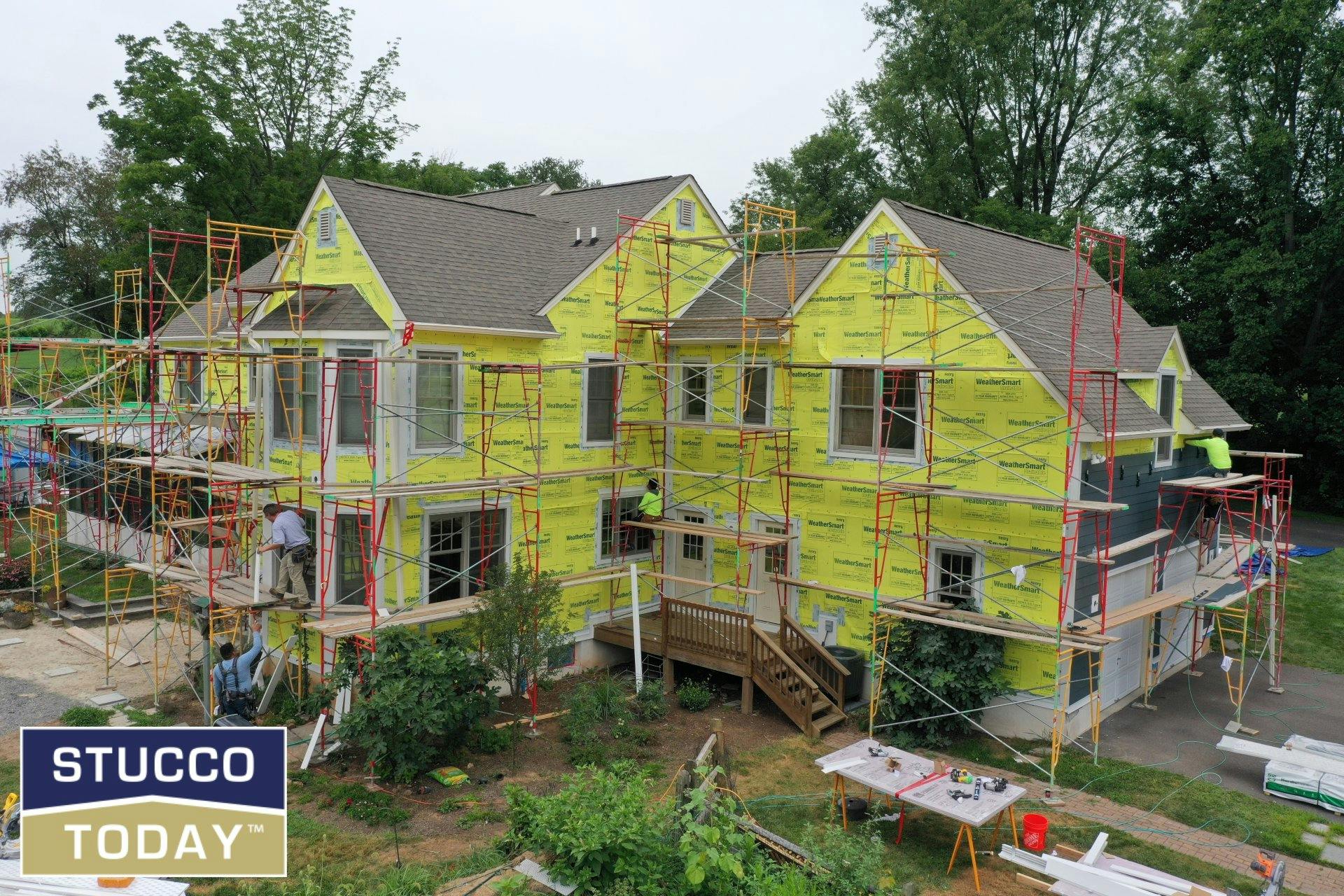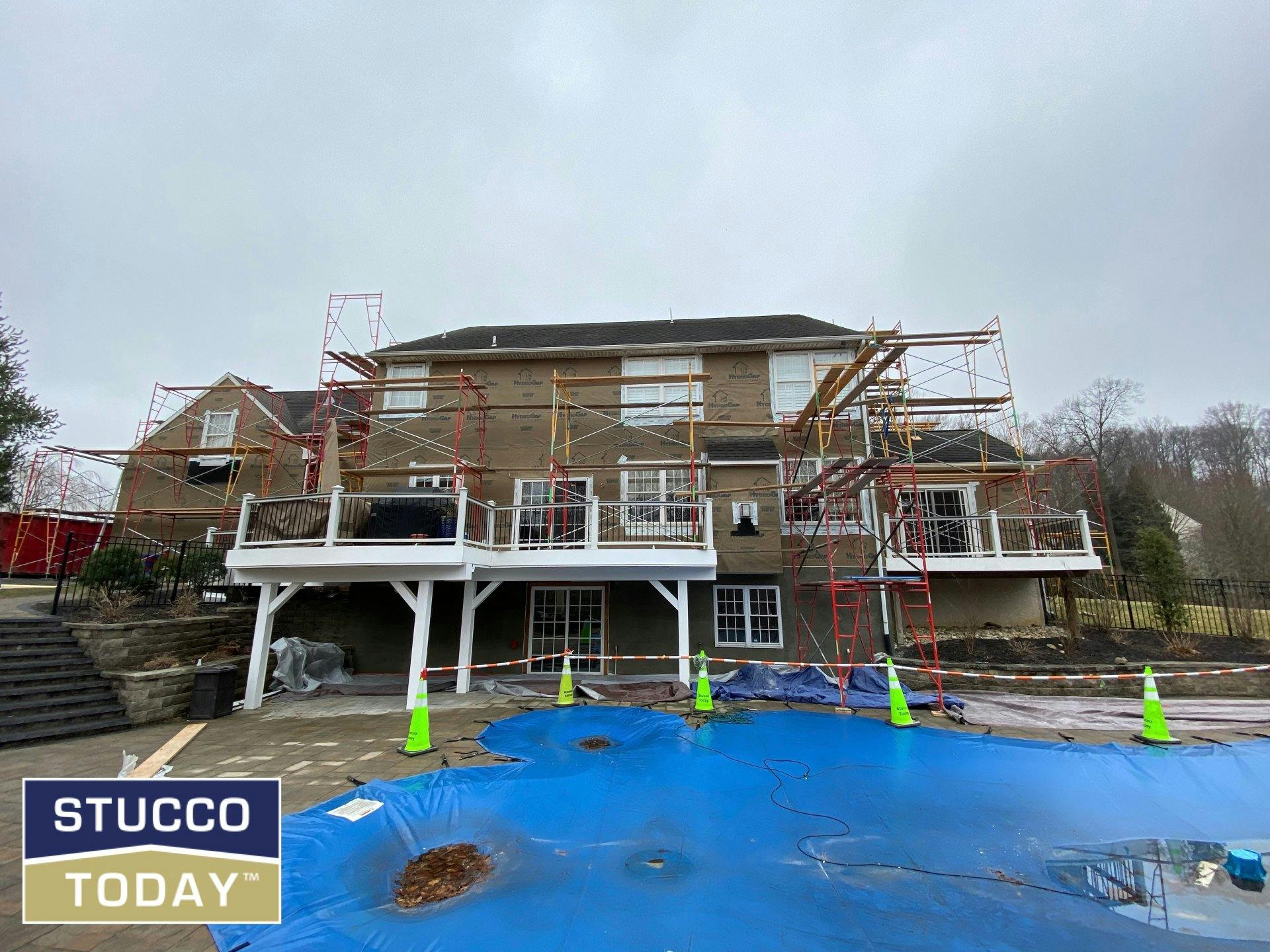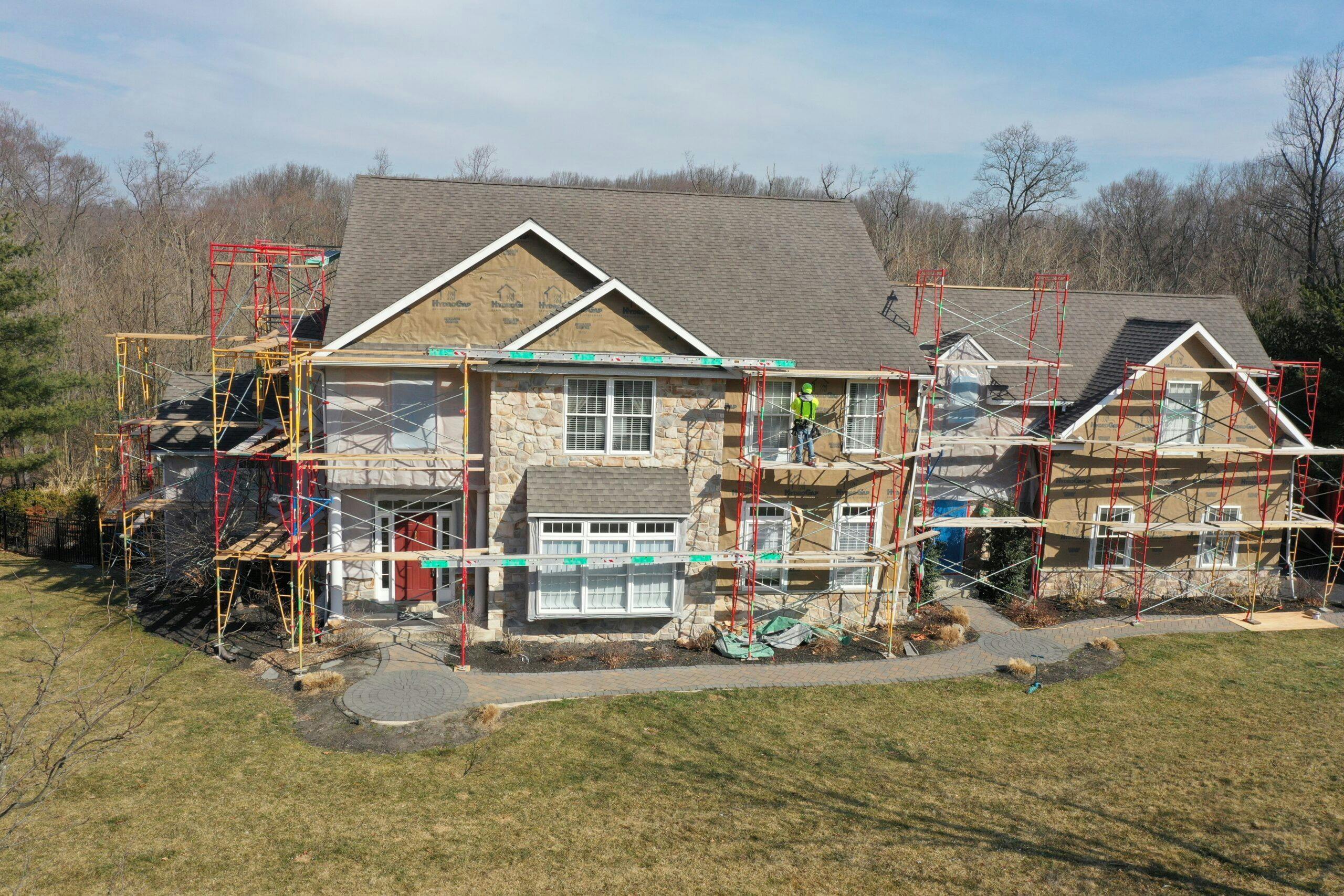In Pennsylvania, moisture is one of the biggest threats to stucco homes. This is also true throughout the rest of the northeastern United States, with its wet climate. Stucco that is not installed the right way can trap moisture within your walls.
This trapped moisture can lead to mold, mildew, and fungus growth. If it reaches the wooden structure of your home, it can even cause your walls to rot from the inside out.
You can prevent damage to your home by hiring professional stucco installers. They’ll know how to install moisture management and protection systems.
This article will explain the differences between moisture management and protection. You’ll also learn why the combination of the two is the best way to protect your home.
Moisture Management

Moisture management is how your wall system expels the moisture that gets within it. Modern stucco is a permeable home exterior material. This means that moisture can permeate through the surface of the stucco and into the wall cavity.
And, it’s not only stucco that allows in moisture. You should always assume that moisture will make its way into your walls at some point. This is true whether you have stucco, siding, or a veneer on your home exterior. How does your wall system deal with that moisture once it’s inside?
There are two primary ways of eliminating moisture from within your walls. The moisture can flow out from the bottom of the wall, evaporate out from the top of the wall, or do both.
Weep Screeds
Weep screeds are drainage openings at the bottom of walls where moisture can “weep” out. They are standard on modern stucco, siding, and stone and brick veneer installations.
Air Vents
Air vents allow air to flow through the wall to dry out any retained moisture. The weep screed at the bottom of the wall also functions as an air vent. But, openings are sometimes included at the top of the walls.
These extra air vents create more airflow. That increased airflow allows moisture to evaporate out through the top of the wall. But, if they are not installed the right way, they could have the opposite effect. What you don’t want is for moisture to enter your wall cavity through the vents meant to dry it out.
Moisture Protection

Moisture protection keeps moisture out of both your walls and the rest of your home. For the sake of clarity, we’ll refer to keeping moisture out of your walls as external protection. We’ll refer to keeping moisture out of your home will as internal protection.
External Moisture Protection
Moisture management gets the water out of your walls. But, external moisture protection keeps it out of your walls in the first place. What’s better than flushing moisture out of your walls? Not having moisture in your walls at all.
Gutters are a part of exterior moisture protection everyone is familiar with. They divert rainwater away from the walls of your home and down to the ground. Without gutters, rainwater would run down your walls and soak through in the process.
The paint on the exterior of your home can also help to prevent moisture intrusion. For example, elastomeric paint waterproofs the stucco surface. But, this paint also reduces the ability for moisture to seep back out of the stucco surface.
Internal Moisture Protection
Once moisture gets inside of your walls, there’s still another layer to the protection. This layer comes in the form of a water-resistive barrier (WRB) and flashing. Both the WRB and flashing prevent moisture from infiltrating into the rest of your home.
You may not know it, but you’re already familiar with WRBs. This is the paper that you’ll see coating the frames of new construction. It’s often green but also comes in a variety of other colors as well, depending on the brand.
WRBs prevent contact between the wooden structure of your home and moisture. They’re not indestructible, though. If water penetrates the barrier, rot can begin to set in.
Flashing directs moisture away from doors, windows, and other entry points. Any openings in the exterior of your home are vulnerable to moisture intrusion. Improper flashing can worsen the problem by directing moisture toward these vulnerable areas.
Stucco Installation Done Right

Moisture management and protection work best when used together. As experienced stucco contractors, we know the importance of moisture management and protection. During remediation projects, we often see the devastating effects improper installations can have.
Without moisture management, water will build up within your walls. This, in turn, will lead to severe damage over time. And without moisture protection, even a small amount of water can become a huge problem. If the water can’t escape, it will soak into your home.
Too much moisture can overwhelm either part of the system on its own. That’s why it’s important for both moisture management and protection to work together. They each cover the weaknesses of the other.
Water will continue to get into your walls. But, with these systems in place, you can rest assured that it will be in small amounts. And these small amounts of moisture will soon evaporate or flow out of the wall cavity.
Stucco Today, Greater Philadelphia’s Trusted Stucco Experts
Is water getting into your walls and then seeping into the rest of your home? Have you noticed mold or mildew growth on your exterior walls? If so, it’s time for a stucco inspection.
An inspection can help to identify damage sources and outline necessary remediation work. If water intrusion is an issue, remediation is almost always necessary. Remediation involves the complete removal and replacement of the exterior. That includes both the moisture management and internal moisture protection systems.
Contact the team at Stucco Today to schedule an inspection. Don’t wait until the damage to your home gets worse.


